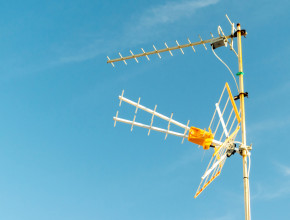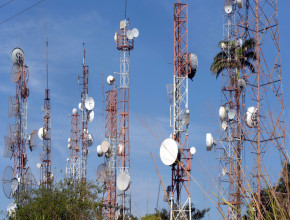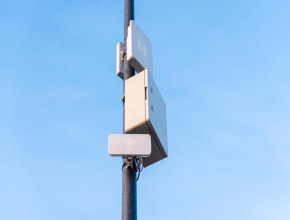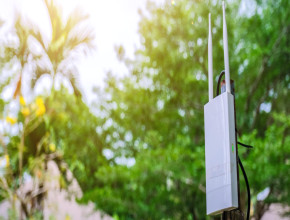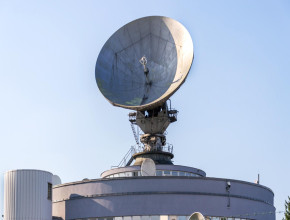
Antennas make wireless communication easy and efficient. With this advanced device, you can talk, share messages, and enjoy high-speed internet seamlessly. MIMO antenna is one foundation of every high-bandwidth wireless technology in use today. In this guide, we will get to know the essence of MIMO antennas, their types, uses, advantages, and disadvantages. This guide is going to be your one-stop solution to understand MIMO antennas. Let’s get started!
What is a MIMO antenna?
MIMO (multiple input and multiple output) antennas are a technology that improves the performance of wireless communication systems. It is not a signal antenna but a group of powerful antennas that build a robust system. That handles multiple signal paths simultaneously.
With its many transmitters and receivers, MIMO helps devices send and receive data faster than a single antenna can. There are mainly three types of technologies including MU-MIMO, SU-MIMO, and Massive MIMO which are used in MIMO technology to boost the speed, coverage, and efficiency in 5G, Wi-Fi, and cellular networks.
MIMO Antenna Types
MIMO antennas come with many features and purposes. There are several types of MIMO antennas that you can use depending on your specific concerns. Here we are going to provide you with details of some important MIMO antennas:
Panel Antennas
Panel antennas are a type of MIMO antenna that is flat and rectangular in their structure. People use this solution for both indoor and outdoor signal boosting. You can mount this antenna on walls or structures outdoors to build seamless communication. It provides a directional radiation pattern that allows you to focus the signal in a specific area or direction. Panel antennas are used in applications like Wi-Fi networks, cellular towers, IoT, security systems, military communications, point-to-point links, and more.
Log-Periodic Antennas
Log-periodic antennas are also known as Log Periodic Dipole antennas. It is a type of directional antenna used for long-distance communications. They have multiple elements of different lengths arranged on a support boom. That gives it a unique design and wide frequency range capability.
You can use this solution to cover a wide range of frequencies. You can use this antenna in many applications such as TV broadcasting, radio communications, EMI testing, radar systems, wireless networks, military applications, signal monitoring and ham radio operations. Its interference reduction capabilities allow users to achieve uninterrupted wireless communications.
Dish Antennas
Dish antennas are highly directional antennas that are mainly used in long-range wireless communication. It has a parabolic shape that contributes to focusing the signal into a narrow beam. Dish antennas come with a very high gain to make them ideal for situations where a strong, focused signal is required over long distances. Typically, it is used for applications like satellite communication, radio astronomy, weather monitoring, broadcasting, military radar, VSAT networks, deep-space exploration, and more.
Omni Antennas
Omni antennas are a type of MIMO antenna that you can use to establish 360-degree coverage. You can easily share and receive signals in all directions, as it can gather signals from all sides. Omni antennas are used to access communications in WiFi networks, cellular towers, IoT devices, emergency communications, GPS, public safety and many other areas.
Mobile Antennas
Mobile antennas are MIMO omnidirectional antennas. These antennas provide great wireless support in vehicles ranging from sedans to RVs, buses, and semi-trucks. They are high-gain antennas and also come with a low profile. You can use this solution to get wireless accessibility in different places where you may get poor wireless signals.
Mobile antennas can function as car antennas. You can easily install it in your car to access various features and functionalities. This will help you get access to entertainment, news and reliable international connections within your vehicles. There are applications where you can use this antenna, such as source systems, emergency communications, military networks, and satellite phones.
Horn antennas
Horn antennas are highly directional antennas used for long-distance communications. It can be identified by its horn-like structure. And also has some side lobes to reject interference. Horn antennas provide a stable wireless connection. This is helpful in applications such as satellite communications, microwave radio links, radar systems, laboratory measurements, and others.
Whip antennas
Whip antennas are a type of monopole antenna. It has a small or no ground plane in its structure. You can utilize this antenna with Wi-Fi routers and some hotspots and gateways.
Whip antennas have an omnidirectional pattern that helps users receive and share signals in all directions. You can wireless solutions used in applications such as vehicles, military communications, marine systems, police radios, and emergency services.
Which MIMO Antenna Should You Choose?
If you are wondering what type of MIMO antennas should be good for you? You need to consider some points to remember which will help you in making your decision better. Here are three key points you should consider when deciding on your antenna selection:
Radiation Pattern
The first question you should ask yourself is whether you are choosing a directional or omnidirectional antenna. If you want to choose a solution to make connections over long distances, then directional antennas will be a suitable solution for you in this situation. While to easily receive signals in all directions, choosing omnidirectional antennas will give you a bang for your buck. If this is your primary concern, you can choose antennas such as a log-periodic antenna or an omni antenna. A log-periodic antenna or an omni-antenna may be the best choice.
Outdoor vs. Indoor
Some antennas provide better coverage in outdoor conditions. While others are suitable for home installation. For outdoor solutions, you can use Yagi, parabolic dish, log periodic and panel antennas. This is ideal for long distances and will make a robust wireless solution. In addition to handheld, indoor antennas such as whip, patch, and dipole antennas are suitable for indoor use.
Bottom Line
MIMO is one of the most common forms of wireless solutions. It played a key role in the deployment of LTE and worldwide interoperability of wireless broadband technology standards for microwave access. The range of MIMO antennas is used in many other cryptocurrencies. This coin boosts wireless connectivity and provides uninterrupted wireless signals. MIMO is always the best choice to use for better connectivity and wireless signals.

